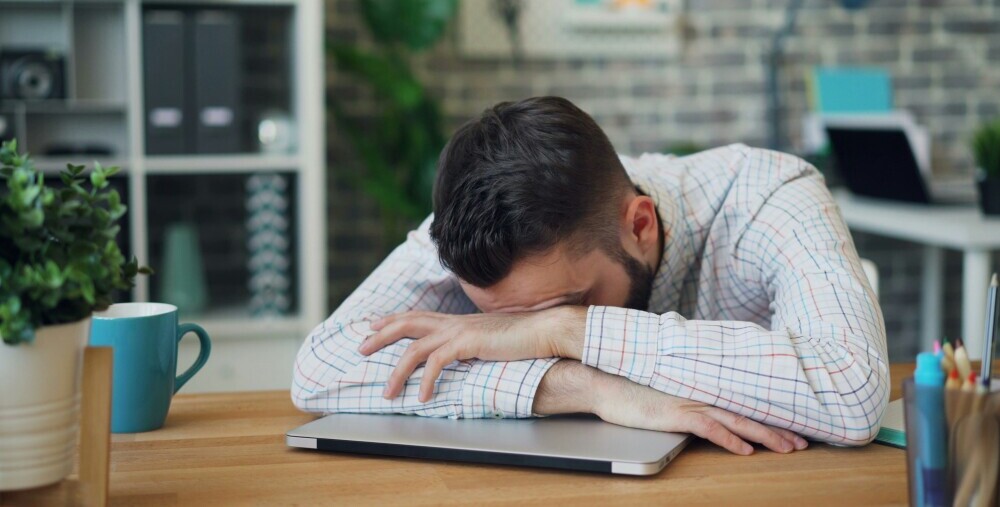In recent years, the rise of remote work has transformed the way we approach our daily routines. With many people now working from home, it’s more important than ever to establish a safe and productive home office environment. While comfort and functionality are often the first things that come to mind when designing a home office, safety should also be a priority. Whether you’re working from a dedicated room or sharing space with family members, ensuring that your workspace is free from hazards can improve your health, well-being, and productivity.
In this blog post, we’ll cover key tips for creating a safe home office that promotes both physical and digital well-being. From ergonomic considerations to cybersecurity practices, these steps will help you set up a workspace that is both functional and secure.

1. Ergonomics: Protect Your Physical Health
One of the most important aspects of creating a safe home office is setting up a workspace that supports your physical health. Poor ergonomics can lead to chronic pain, fatigue, and long-term musculoskeletal issues. Here are a few key ergonomic tips to keep in mind:
Chair Selection
Your office chair should be adjustable and provide adequate support for your lower back. Look for a chair with lumbar support to maintain the natural curve of your spine. Ideally, your feet should rest flat on the floor, and your knees should be level with your hips. A chair with adjustable armrests can also help reduce strain on your shoulders and wrists.
Desk Height
The height of your desk should be such that your elbows are at a 90-degree angle when typing or using a mouse. Your forearms should be parallel to the ground, and your wrists should remain straight to avoid strain. If your desk is too high or too low, consider investing in a height-adjustable desk or using a keyboard tray.
Monitor Placement
Position your monitor at eye level, so you don’t have to strain your neck by looking up or down. The screen should be about an arm’s length away, with the top of the screen at or just below eye level. This setup will help prevent neck and back strain, as well as reduce eye fatigue.
Keyboard and Mouse Setup
Your keyboard and mouse should be positioned in a way that allows you to keep your arms relaxed and your wrists straight. If you’re using a laptop, consider using an external keyboard and mouse to achieve a more ergonomic setup. Consider investing in an ergonomic keyboard and mouse designed to reduce strain on your wrists and hands.
2. Electrical Safety: Avoid Hazards and Prevent Fires
Electrical safety is crucial in any workspace, especially in a home office where you may have multiple devices plugged in at once. Follow these safety tips to reduce the risk of electrical hazards:
Check for Overloaded Outlets
Avoid overloading electrical outlets by plugging too many devices into one socket. Overloaded outlets can cause overheating, increasing the risk of electrical fires. Use power strips with surge protectors to safely plug in multiple devices, and always check the maximum wattage rating of the power strip to ensure it can handle the load.
Use Quality Cables
Ensure that all power cords and cables are in good condition. Frayed or damaged cords can lead to electrical shock or fires. Replace any worn-out cables immediately and use cable organizers to keep cords neat and out of the way to prevent tripping hazards.
Secure Cords and Wires
Loose cords can pose a tripping hazard. Use cable ties, clips, or a cable management system to secure cords and prevent them from cluttering the floor. If you have cords running across walkways, consider using cord covers or mats to reduce the risk of tripping.
3. Lighting: Reduce Eye Strain and Create a Comfortable Environment
Proper lighting is essential for a safe and productive home office. Poor lighting can cause eye strain, headaches, and fatigue, while overly bright lights can create glare on your screen, leading to discomfort. Here’s how to set up ideal lighting in your home office:
Natural Light
Whenever possible, position your desk near a window to take advantage of natural light. Exposure to natural light has been shown to improve mood, reduce stress, and enhance productivity. However, be mindful of glare on your computer screen. Use blinds or curtains to control the amount of light entering the room.
Task Lighting
In addition to natural light, use task lighting to illuminate your workspace. Desk lamps with adjustable arms and brightness settings can help you focus light where you need it most. LED desk lamps with built-in dimmers allow you to customize the lighting to your comfort level.
Ambient Lighting
Ambient lighting should fill the room without causing harsh shadows or glare. Soft, indirect lighting from overhead fixtures or floor lamps can help create a comfortable, balanced atmosphere. Avoid using overly bright or flickering lights, as these can cause discomfort and eye strain.
4. Digital Security: Protect Your Data and Devices
In today’s digital world, cybersecurity is as important as physical safety. When working from home, you may be handling sensitive information, which means protecting your devices and data is critical. Here are some digital safety tips:
Use Strong Passwords
Use complex passwords for all of your accounts and devices, and avoid using the same password across multiple platforms. Consider using a password manager to generate and store unique passwords for each service. Enable two-factor authentication (2FA) for an extra layer of security.
Install Antivirus Software
Install reputable antivirus software on all your devices to protect against malware, ransomware, and other cyber threats. Keep your software up to date to ensure you’re protected from the latest security vulnerabilities.
Secure Your Wi-Fi Network
Ensure that your Wi-Fi network is secured with a strong password and encryption. Use WPA3 encryption (or WPA2 if WPA3 is unavailable) to prevent unauthorized access to your network. If possible, set up a guest network for visitors and non-work-related devices to keep your primary network secure.
Regular Backups
Regularly back up important files to the cloud or an external hard drive. In the event of a cyberattack, accidental deletion, or hardware failure, having backups can save you time and stress.

5. Mental Health: Create a Safe and Stress-Free Environment
Workplace safety isn’t just about physical and digital risks; mental health is also a critical aspect of creating a safe home office. A stressful work environment can negatively impact your productivity and well-being. Here’s how to foster a positive, stress-free atmosphere:
Create Boundaries Between Work and Home Life
When working from home, it can be difficult to separate work from personal life. Set clear boundaries by creating a designated workspace and sticking to set work hours. Avoid working from the couch or bed, as this can lead to burnout and lack of productivity.
Take Regular Breaks
Take regular breaks to stretch, walk around, and rest your eyes. The Pomodoro technique, which involves working in focused intervals followed by short breaks, can help prevent burnout and improve focus.
Organize Your Workspace
A cluttered workspace can lead to stress and distraction. Keep your desk organized by minimizing unnecessary items and using storage solutions to keep supplies and paperwork out of sight. A tidy workspace can help you feel more in control and focused.
Conclusion
Creating a safe home office goes beyond just arranging furniture and setting up tech. It’s about designing a space that supports your health, security, and well-being. By paying attention to ergonomics, electrical safety, lighting, digital security, and mental health, you can build a home office that is both safe and productive. A well-thought-out workspace will not only keep you physically and mentally safe but also help you perform at your best while working from home.
